THE GALLERY
Photos by Joe McGloin
various half-frames
"All shots were on the same roll of film -- Kodachrome 25 at ISO 32. When
using Kodachrome, I usually under-expose slightly to get richer colors for
slide projection. I was testing out the Kodachrome and the various
settings of the cameras. All of the cameras performed flawlessly, although
some, probably, had not ben used in decades. There's nothing like a
Kodachrome 25 slide on a bright screen in a darkened room. It REALLY
makes you feel like you were there. Needless to say, these small shots
on dull computer screens can't come close to what you can really achieve."
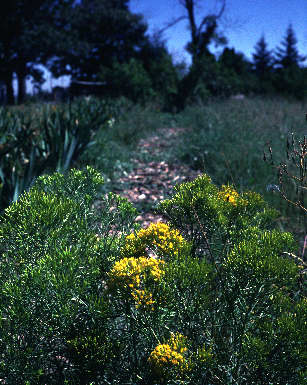
Rabbitbrush with a Demi EE 1.7. I shot it at a wide aperture to check
my focusing ability. I picked this camera up for $20 and both the auto
and manual settings work fine. This camera comes with a FAST lens and
a CDS meter. Just the thing for low light -- but you better be good
at judging distance since it does not have a rangefinder. Results are
nice and sharp -- even wide open.
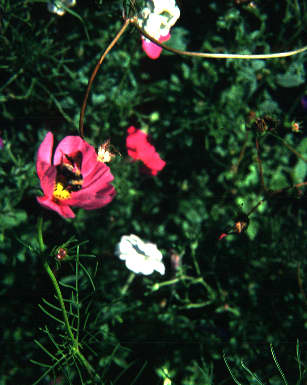
This Fuji Half also has a fast lens (f1.7). I bought it for a song
as well. It has a 43mm filter thread so I slipped on the close-up filter
from my Yashica Samurai Z. You have to set the lens at infinity and
use the close-up table to judge the distance, but it works. The great
thing about this Fuji is the full information viewfinder. Both the
aperture and shutter speed are in clear view, as well as exposure information
and focusing distance. You never have to take your eye away from the
viewfinder.
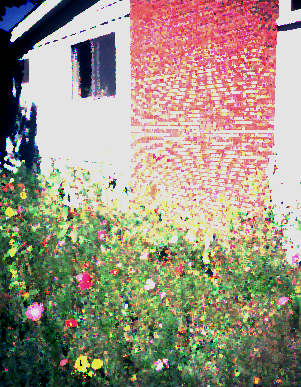
I had no hope that this Pen EE would work. After all I bought it for
$10 and it's the oldest of the Pen EE series. But -- blow me away --
it works in both manual and auto mode. It's basically an auto camera
though. The selenium meter sets the f-stop. But they designed
in manul f-stops so it could be used with flash. It's tiny (who needs
an ELPH), it's sharp (everything from 5 feet to infinity), and it's cheap
(save your money for Kodachrome -- which they don't have in APS). This
image was manipulated using a software pastel filter.
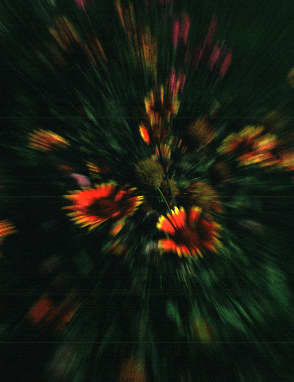
I have a couple of Pen Ft's, but I don't use the Pen lenses. It's not
that I think them inferior. But I use Minolta for my full-frame 35mm
work and already have enough lenses. Olympus made several adapters
and after a couple of years I found a Minolta adapter -- at a reasonable
price. And while my Minolta lenses cannot be used in auto-diaphragm
mode like the Pen lenses, I do have a wider selection to choose from. I
can get half-frame shots with super wide-angle, zoom or bellows lenses.
This shot was made with a Tokina 100-300 f4.0 lens, zooming as the
exposure was made.
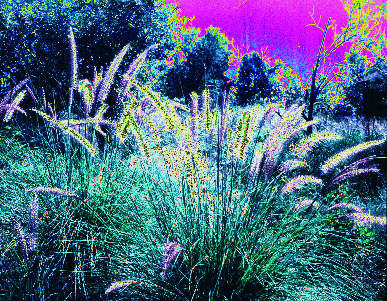
Yashica also made a half-frame f1.7 camera. It's smaller than the Fuji
or Canon and has a rapid film advance feature. The film is loaded upside
down and the left thumb advances the film with a wheel. It's a nice
touch, but not as nice as the results. Despite its age, the selenium
meter appears to work like a charm, and any error would show up clearly when
shooting with Kodachrome. This shot is of some fountain grass, wildly
manipulated in Picture Publisher.
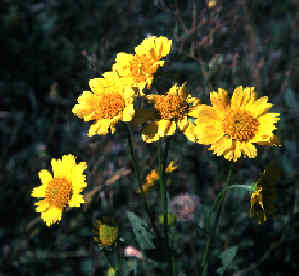
The Pen D3 is also a fast half-frame. (Is there a theme here?)
Surprisingly it uses the same body as the original Pen, so it is
substantially smaller than the speed demons from other manufacturers. And
it even has a CDS meter built-in -- but no auto mode. This close-up
is about 25% of the negative and uses the Samurai Z close-up lens.
To return to the main index for the Sub Club click
here.
COPYRIGHT @ 1995, 1996, 1997, 1998, 1999, 2000, 2001, 2002, 2003, 2004, 2005 by Joe McGloin. All Rights Reserved.





